John Ruskin - Ariadne Florentina - Six Lectures on Wood and Metal Engraving
Здесь есть возможность читать онлайн «John Ruskin - Ariadne Florentina - Six Lectures on Wood and Metal Engraving» — ознакомительный отрывок электронной книги совершенно бесплатно, а после прочтения отрывка купить полную версию. В некоторых случаях можно слушать аудио, скачать через торрент в формате fb2 и присутствует краткое содержание. Жанр: foreign_home, literature_19, visual_arts, foreign_antique, на английском языке. Описание произведения, (предисловие) а так же отзывы посетителей доступны на портале библиотеки ЛибКат.
- Название:Ariadne Florentina: Six Lectures on Wood and Metal Engraving
- Автор:
- Жанр:
- Год:неизвестен
- ISBN:нет данных
- Рейтинг книги:4 / 5. Голосов: 1
-
Избранное:Добавить в избранное
- Отзывы:
-
Ваша оценка:
- 80
- 1
- 2
- 3
- 4
- 5
Ariadne Florentina: Six Lectures on Wood and Metal Engraving: краткое содержание, описание и аннотация
Предлагаем к чтению аннотацию, описание, краткое содержание или предисловие (зависит от того, что написал сам автор книги «Ariadne Florentina: Six Lectures on Wood and Metal Engraving»). Если вы не нашли необходимую информацию о книге — напишите в комментариях, мы постараемся отыскать её.
Ariadne Florentina: Six Lectures on Wood and Metal Engraving — читать онлайн ознакомительный отрывок
Ниже представлен текст книги, разбитый по страницам. Система сохранения места последней прочитанной страницы, позволяет с удобством читать онлайн бесплатно книгу «Ariadne Florentina: Six Lectures on Wood and Metal Engraving», без необходимости каждый раз заново искать на чём Вы остановились. Поставьте закладку, и сможете в любой момент перейти на страницу, на которой закончили чтение.
Интервал:
Закладка:
67. Get this first summary, therefore, well into your minds. The word 'Norman' I use roughly for North-savage;—roughly, but advisedly. I mean Lombard, Scandinavian, Frankish; everything north-savage that you can think of, except Saxon. (I have a reason for that exception; never mind it just now.) 12 12 Of course it would have been impossible to express in any accurate terms, short enough for the compass of a lecture, the conditions of opposition between the Heptarchy and the Northmen;—between the Byzantine and Roman;—and between the Byzantine and Arab, which form minor, but not less trenchant, divisions of Art-province, for subsequent delineation. If you can refer to my "Stones of Venice," see § 20 of its first chapter.
All north-savage I call Norman, all south-savage I call Byzantine; this latter including dead native Greek primarily—then dead foreign Greek, in Rome;—then Arabian—Persian—Phœnician—Indian—all you can think of, in art of hot countries, up to this year 1200, I rank under the one term Byzantine. Now all this cold art—Norman, and all this hot art—Byzantine, is virtually dead, till 1200. It has no conscience, no didactic power; 13 13 Again much too broad a statement: not to be qualified but by a length of explanation here impossible. My lectures on Architecture, now in preparation ("Val d'Arno"), will contain further detail.
it is devoid of both, in the sense that dreams are.
Then in the thirteenth century, men wake as if they heard an alarum through the whole vault of heaven, and true human life begins again, and the cradle of this life is the Val d'Arno. There the northern and southern nations meet; there they lay down their enmities; there they are first baptized unto John's baptism for the remission of sins; there is born, and thence exiled,—thought faithless, for breaking the font of baptism to save a child from drowning, in his 'bel San Giovanni,'—the greatest of Christian poets; he who had pity even for the lost.
68. Now, therefore, my whole history of Christian architecture and painting begins with this Baptistery of Florence, and with its associated Cathedral. Arnolfo brought the one into the form in which you now see it; he laid the foundation of the other, and that to purpose, and he is therefore the Captain of our first school.
For this Florentine Baptistery 14 14 At the side of my page, here, I find the following memorandum, which was expanded in the viva-voce lecture. The reader must make what he can of it, for I can't expand it here. Sense of Italian Church plan. Baptistery, to make Christians in; house, or dome, for them to pray and be preached to in; bell-tower, to ring all over the town, when they were either to pray together, rejoice together, or to be warned of danger. Harvey's picture of the Covenanters, with a shepherd on the outlook, as a campanile.
is the great one of the world. Here is the center of Christian knowledge and power.
And it is one piece of large engraving . White substance, cut into, and filled with black, and dark-green.
No more perfect work was afterwards done; and I wish you to grasp the idea of this building clearly and irrevocably,—first, in order (as I told you in a previous lecture) to quit yourselves thoroughly of the idea that ornament should be decorated construction; and, secondly, as the noblest type of the intaglio ornamentation, which developed itself into all minor application of black and white to engraving.
69. That it should do so first at Florence, was the natural sequence, and the just reward, of the ancient skill of Etruria in chased metal-work. The effects produced in gold, either by embossing or engraving, were the direct means of giving interest to his surfaces at the command of the 'auri faber,' or orfevre: and every conceivable artifice of studding, chiseling, and interlacing was exhausted by the artists in gold, who were at the head of the metal-workers, and from whom the ranks of the sculptors were reinforced.
The old French word 'orfroiz,' (aurifrigia,) expresses essentially what we call 'frosted' work in gold; that which resembles small dew or crystals of hoar-frost; the 'frigia' coming from the Latin frigus. To chase, or enchase, is not properly said of the gold; but of the jewel which it secures with hoops or ridges, (French, en chasser 15 15 And 'chassis,' a window frame, or tracery.
). Then the armorer, or cup and casket maker, added to this kind of decoration that of flat inlaid enamel; and the silver-worker, finding that the raised filigree (still a staple at Genoa) only attracted tarnish, or got crushed, early sought to decorate a surface which would bear external friction, with labyrinths of safe incision.
70. Of the security of incision as a means of permanent decoration, as opposed to ordinary carving, here is a beautiful instance in the base of one of the external shafts of the Cathedral of Lucca; thirteenth-century work, which by this time, had it been carved in relief, would have been a shapeless remnant of indecipherable bosses. But it is still as safe as if it had been cut yesterday, because the smooth round mass of the pillar is entirely undisturbed; into that, furrows are cut with a chisel as much under command and as powerful as a burin. The effect of the design is trusted entirely to the depth of these incisions—here dying out and expiring in the light of the marble, there deepened, by drill holes, into as definitely a black line as if it were drawn with ink; and describing the outline of the leafage with a delicacy of touch and of perception which no man will ever surpass, and which very few have rivaled, in the proudest days of design.
71. This security, in silver plates, was completed by filling the furrows with the black paste which at once exhibited and preserved them. The transition from that niello-work to modern engraving is one of no real moment: my object is to make you understand the qualities which constitute the merit of the engraving, whether charged with niello or ink. And this I hope ultimately to accomplish by studying with you some of the works of the four men, Botticelli and Mantegna in the south, Dürer and Holbein in the north, whose names I have put in our last flag, above and beneath those of the three mighty painters, Perugino the captain, Bellini on one side—Luini on the other.
The four following lectures 16 16 This present lecture does not, as at present published, justify its title; because I have not thought it necessary to write the viva-voce portions of it which amplified the 69th paragraph. I will give the substance of them in better form elsewhere; meantime the part of the lecture here given may be in its own way useful.
will contain data necessary for such study: you must wait longer before I can place before you those by which I can justify what must greatly surprise some of my audience—my having given Perugino the captain's place among the three painters.
72. But I do so, at least primarily, because what is commonly thought affected in his design is indeed the true remains of the great architectural symmetry which was soon to be lost, and which makes him the true follower of Arnolfo and Brunelleschi; and because he is a sound craftsman and workman to the very heart's core. A noble, gracious, and quiet laborer from youth to death,—never weary, never impatient, never untender, never untrue. Not Tintoret in power, not Raphael in flexibility, not Holbein in veracity, not Luini in love,—their gathered gifts he has, in balanced and fruitful measure, fit to be the guide, and impulse, and father of all.
LECTURE III
73. I am to-day to begin to tell you what it is necessary you should observe respecting methods of manual execution in the two great arts of engraving. Only to begin to tell you. There need be no end of telling you such things, if you care to hear them. The theory of art is soon mastered; but 'dal detto al fatto, v'e gran tratto;' and as I have several times told you in former lectures, every day shows me more and more the importance of the Hand.
Читать дальшеИнтервал:
Закладка:
Похожие книги на «Ariadne Florentina: Six Lectures on Wood and Metal Engraving»
Представляем Вашему вниманию похожие книги на «Ariadne Florentina: Six Lectures on Wood and Metal Engraving» списком для выбора. Мы отобрали схожую по названию и смыслу литературу в надежде предоставить читателям больше вариантов отыскать новые, интересные, ещё непрочитанные произведения.
Обсуждение, отзывы о книге «Ariadne Florentina: Six Lectures on Wood and Metal Engraving» и просто собственные мнения читателей. Оставьте ваши комментарии, напишите, что Вы думаете о произведении, его смысле или главных героях. Укажите что конкретно понравилось, а что нет, и почему Вы так считаете.
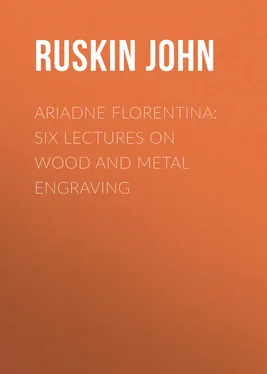


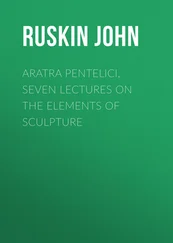
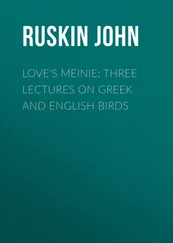
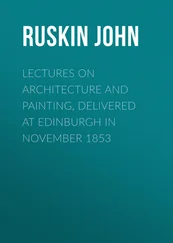
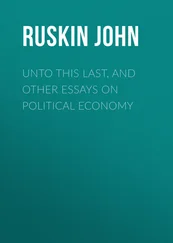
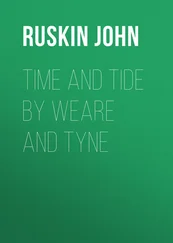
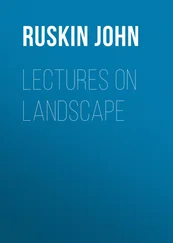
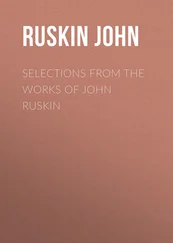
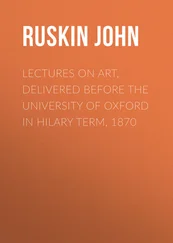
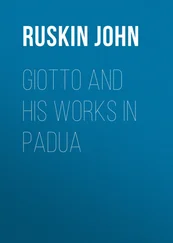
![John Bruce - The Lettsomian Lectures on Diseases and Disorders of the Heart and Arteries in Middle and Advanced Life [1900-1901]](/books/749387/john-bruce-the-lettsomian-lectures-on-diseases-and-disorders-of-the-heart-and-arteries-in-middle-and-advanced-life-1900-1901-thumb.webp)